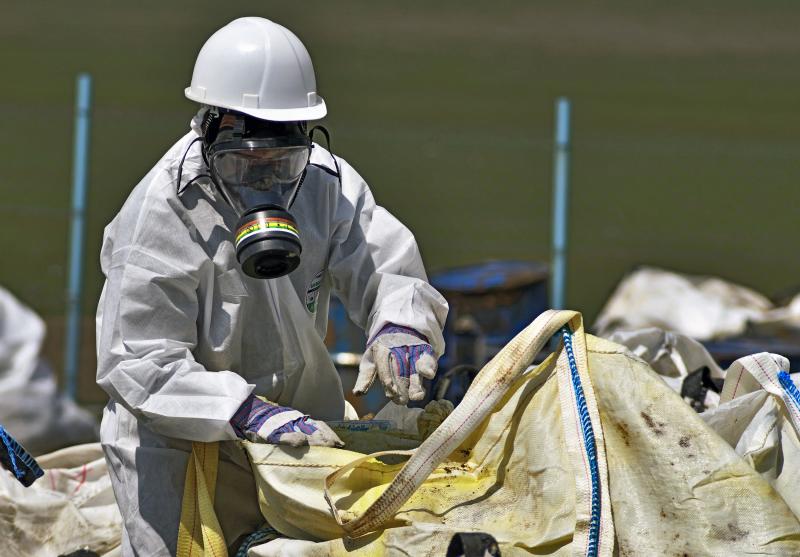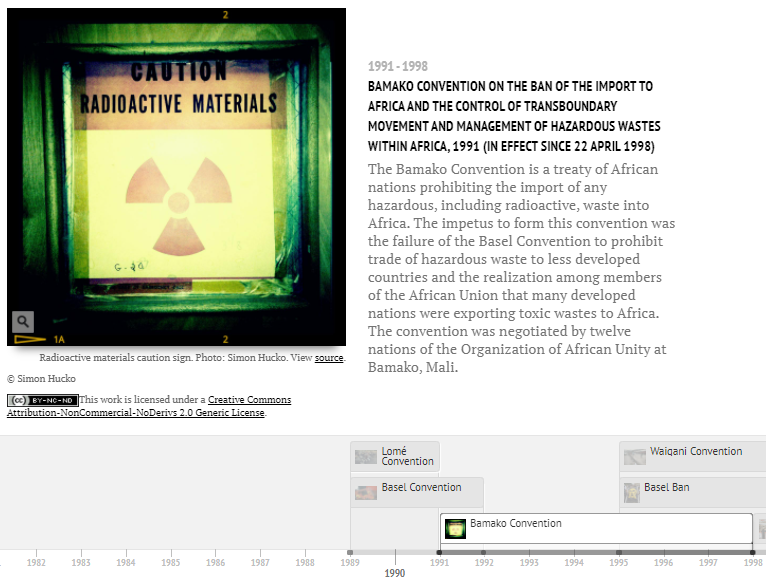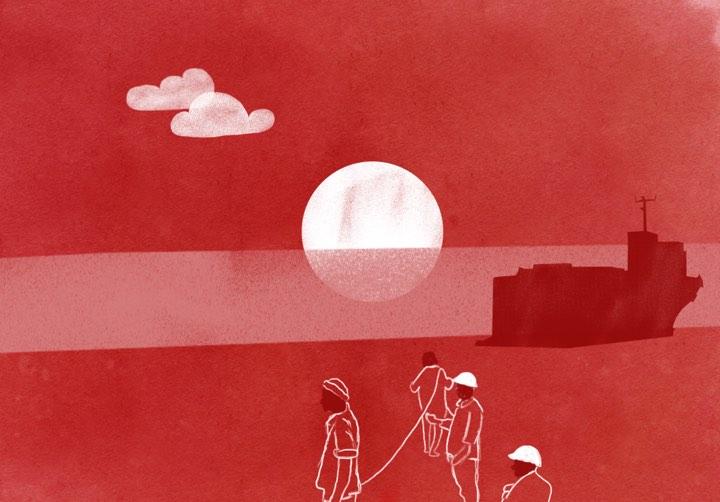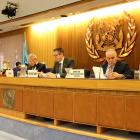Waste Governance
Every five minutes. Every single day of the year. That is how frequently a shipment of hazardous waste crosses a national frontier. The Organization for Economic Cooperation and Development (OECD) reported this mind-boggling statistic in the late 1980s, at a time when the trade of hazardous waste happened without much international oversight or regulation. Morally questionable trade deals were made behind closed doors, ships set off with their hazardous loads, and they often could only be discovered by the alert eyes of environmental activists, journalists, or affected communities. As the trade volume grew, the lack of control and data turned out to be even more dangerous. Between 1986 and 1988, for instance, 3.5 million tons of hazardous wastes had been shipped for further treatment, disposal, or recycling around the globe—mainly within OECD member countries, but also to Africa, Latin America, and Asia. This chapter discusses how the international community struggled to regulate the global waste trade, revealing an exciting story of shining milestones and dangerous loopholes.

Discussion at the 39th meeting of the parties to the London Convention and the London Protocol at the International Maritime Organization (IMO) in 2017. Unknown photographer, 2017.
Discussion at the 39th meeting of the parties to the London Convention and the London Protocol at the International Maritime Organization (IMO) in 2017. Unknown photographer, 2017.
Courtesy of the International Maritime Organization.
Accessed via Flickr on 21 April 2021. Click here to view source.
 This work is licensed under a Creative Commons Attribution 2.0 Generic License.
This work is licensed under a Creative Commons Attribution 2.0 Generic License.
The long way to regulate the waste trade: The Basel Convention
At the height of the waste trade in the 1980s, the opposition to it also gained prominence. Environmental organizations active locally and internationally, such as COHPEDA (Collectif haïtien pour la protection de l’environnement et un développement alternative), Friends of the Earth, or Greenpeace, not only tried to block individual shipments, but increasingly called for instruments of global environmental governance to ban the hazardous waste trade as a whole. So far, the international community had only moved to protect the open ocean. The London Dumping Convention from 1972 aimed to control all sources of marine pollution and regulated the dumping of waste beyond territorial waters. By design, this measure was not sufficient to prevent the trade in hazardous wastes and its dumping on land. Something more substantial was needed.

The Global Environment Facility works with the government and local authorities to reduce the release of POPs from the stock piles and, wherever possible, remove the toxic substances from the Lagluja dump site, biggest collector of POPs in Georgia. Photograph by Vladimer Valishvili (UNDP), 2014.
The Global Environment Facility works with the government and local authorities to reduce the release of POPs from the stock piles and, wherever possible, remove the toxic substances from the Lagluja dump site, biggest collector of POPs in Georgia. Photograph by Vladimer Valishvili (UNDP), 2014.
2014 Vladimer Valishvili, UNDP.
Accessed via Flickr on 22 April 2021. Click here to view source.
 This work is licensed under a Creative Commons Attribution-NonCommercial-ShareAlike 2.0 Generic License.
This work is licensed under a Creative Commons Attribution-NonCommercial-ShareAlike 2.0 Generic License.
The Basel Convention on the Control of Transboundary Movements of Hazardous Wastes and Their Disposal promised to become the long-desired instrument to stop the unequal global distribution of environmental and health hazards after its adoption in 1989. A protest movement formed by Greenpeace and governments of the Global South, most prominently the Organization of African Unity (OAU), managed to almost single-handedly compel the international community to draft and sign the Basel Convention. Under the auspices of the United Nations Environment Programme, the convention focused on the minimization of hazardous waste generation and developed common criteria for the management of these wastes. The treaty restricted transboundary shipments where environmentally sound management was not possible, and established regulatory controls where the movement of such wastes was permissible. From the 1990s on, countries also had to provide statistics on waste production and trade, making it possible for the first time to elaborate a more accurate picture of the global waste trade. To learn more about the Basel Convention, check out Incoherent Voices, a research project conducted at the Rachel Carson Center. In the beginning, the Basel Convention appeared as a veritable landmark of global environmental governance.
Once put in practice, however, the Basel Convention turned out to be more contentious, as individual nations and international organizations struggled with the convention’s provisions and loopholes. Its approach of restricting free trade—instead of outright banning it—failed to stop the global movement of hazardous waste. What is worse, the convention’s framework actually legitimized the waste trade, as country-members simply had to inform each other about trade deals prior to making a shipment. Other issues remained unanswered, for instance, the repatriation of rejected waste: who would pay and where would unwanted material find its final disposal ground? Loopholes such as the unclear definitions of terms resulted in difficulties of enforcement and compelled waste traders to simply re-label their waste: while waste trade for disposal was restricted, recycling was very much welcome. The material hazards of the waste remained the same.
Basel was simply not enough
In response to the failures of the Basel Convention, the Organization of African Unity pushed for a stricter treaty to protect its member countries. In 1991, several African nations adopted the Bamako Convention, fully prohibiting the import of any hazardous and radioactive waste into Africa. Additionally, it imposed strict liability on hazardous-waste generation and forbade the import of substances that had been banned in the country of manufacture. Yet, once again, the Bamako Convention was not the panacea and is still not really applied throughout Africa. One of the explanations for the failure of these international agreements was the pressure from industrialized countries such as the United States, Australia, and Canada to continue the trade in hazardous waste materials and the willingness in some countries of the Global South to engage in the waste business voluntarily to benefit their economies from recyclable waste resources.
Click on the image below to open the interactive timeline in a new window
The original exhibition features an interactive timeline of the most important international agreements on hazardous waste management. View the events on the following pages.

Timeline of the most important international agreements on hazardous waste management. Click the image to visit the full timeline.
Timeline of the most important international agreements on hazardous waste management. Click the image to visit the full timeline.
This image features a photograph by Simon Hucko, licensed as CC BY-NC-ND 2.0.
The copyright holder reserves, or holds for their own use, all the rights provided by copyright law, such as distribution, performance, and creation of derivative works.
The global governance of the hazardous waste trade produced a mixed record. Still, the UN conventions also implied significant advances in protecting public health and the environment: the days of shady and covert trade deals are mostly over. Many stipulations and definitions have found their way into national laws in the European Union and many countries in the Global South. Another avenue taken to minimize the threats posed by hazardous waste consisted in outlawing particularly dangerous substances. The Stockholm Convention of 2001, for instance, aimed at eliminating the production, use, and trade of Persistent Organic Pollutants (POPs). The Basel Convention itself offers a source of tentative hope. Back in 1995, the member-countries had adopted a total ban on hazardous waste trade from OECD to non-OECD countries as an amendment—awaiting ratification by enough states. In 2019, a sufficient number of countries ratified the Basel Ban Amendment and it finally entered into force. It remains to be seen what comes of it, particularly given that the United States as the biggest producer of hazardous waste globally negotiated and signed the convention, but still refuses to ratify it.
Case study: Shipbreaking
The fate of end-of-life vessels illustrates the successes and setbacks of international waste governance. Have you ever stood in awe in front of a cruise or cargo ship towering high above you? Maybe you wondered what would happen to it once it was old and no longer seaworthy? You might not have guessed that such an obsolete ship has to be considered hazardous waste. Ships are not just floatable masses of steel; they are assemblages of a variety of materials. Vessels built before the 1980s, in particular, were built with dangerous substances ranging from asbestos and heavy metals to radioactive materials. And that is why end-of-life ships fall under the scope of the Basel Convention.
The hazardous nature of ships creates a controversy once they have to be dismantled or “broken.” The huge amounts of steel can be recycled and remains a valuable resource in emerging economies. The toxic elements onboard, however, need to be handled with the greatest care. Many ship owners try to minimize the costs for getting rid of their outdated vessels and send them to giant shipbreaking yards in South Asia. The 10 kilometer long beach of Alang, once a tiny fishing village in the Indian state of Gujarat, is now home to one of the world’s largest shipbreaking industries (Demaria, 2010). So far, almost 8000 ships have been beached and dismantled at Alang’s yards—with upward tendency. The ongoing trade with end-of-life ships, however, threatens the health of thousands of workers at such shipbreaking yards in India, Bangladesh, and Pakistan.

Shipbreaking in progress, with a cut being made on the nose of the ship in Alang, Gujarat. Photograph by Ayushi Dhawan, 2018.
Shipbreaking in progress, with a cut being made on the nose of the ship in Alang, Gujarat. Photograph by Ayushi Dhawan, 2018.
2018 Ayushi Dhawan
 This work is licensed under a Creative Commons Attribution-NonCommercial-NoDerivatives 4.0 International License.
This work is licensed under a Creative Commons Attribution-NonCommercial-NoDerivatives 4.0 International License.
In some cases, international regulations have been effective in preventing the dumping of toxic ships. Let us have a look at the Sandrien, a giant chemical tanker. Port authorities in Amsterdam arrested the Sandrien as it prepared to leave for India in 2001—supposedly for demolition. The arrest was made because its owner, Upperton Limited, had failed to give notice according to EU regulations. The Basel Convention had already been transposed into the European Union Waste Shipment Regulation. The ship owner, in his defense, claimed in court that the operational vessel was not waste at the time of its arrest. According to the judgment, however, the impending journey of Sandrien was the first step towards illicit traffic and a violation of the Basel Convention’s provisions. Three years later, as the ship owner remained untraceable, the Dutch government paid 2 million euros to a Dutch ship dismantling company, to get rid of the vessel docked at the port, waiting for its end.
Sandrien is one successful example of environmental justice, but there are many more ships that escape the watchful eye of port authorities. An average of 700 ships are sent for demolition every year—oftentimes not in a safe and clean manner. The regular export ships to non-OECD countries for demolition highlights the practical difficulties in implementing the Basel Convention. Ship owners continue to take advantage of the prevailing loopholes in the international regulatory system and export contaminated vessels laden with hazardous materials to the shipbreaking yards in South Asia for recycling.
















